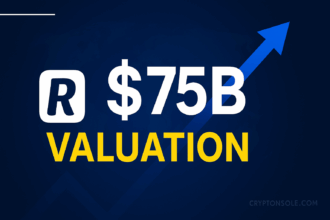Summary
For the first time, decentralized perpetual exchanges (Perp DEXs) recorded over US$1 trillion in trading volume in a single month, underscoring accelerating growth and competition in the DeFi derivatives sector. According to data from DeFiLlama, September’s volume reached ~US$1.14 trillion, driven by protocols such as Aster, Hyperliquid, and Lighter.
This milestone reflects a surge in trader demand, incentive programs, and improved infrastructure that makes on-chain derivatives more viable.
Key Figures & Highlights
- Total Monthly Volume: ~US$1.143 trillion in September 2025 — the first time Perp DEXs crossed the trillion-dollar barrier.
- Major Protocols Leading the Surge:
- Aster: ~US$493.6 billion in perpetual volume over the month.
- Hyperliquid: ~US$280.7 billion.
- Lighter: ~US$165.4 billion.
- Month-on-month growth was strong: from August’s ~US$766 billion to September’s ~US$1.14T, representing ~49 % increase.
- The push to this record was enabled by aggressive liquidity incentives, high leverage offerings, and competition among Perp DEX protocols.
Why This Breakthrough Is Significant
- Ecosystem Validation
Surpassing US$1T shows that the derivatives side of DeFi is no longer marginal — it is maturing into a core, high-frequency component of decentralized markets. - Shift in Trader Behavior
Traders appear increasingly comfortable executing leveraged trades on chained derivatives platforms, likely due to better UX, lower friction, and deeper liquidity. - Incentive Arms Race
Many DEXs are deploying token rewards, yield sharing, or fee discounts to attract volume. The record month may partly reflect these incentive “arms races” playing out. - Pressure on Centralized Exchanges (CEXs)
As Perp DEX volumes grow, the competitive edge of CEXs may erode — especially for derivatives trading, which historically has been a strong suit for centralized platforms. - Governance & Sustainability
With high volume comes increased scrutiny: protocols must manage risks around capital efficiency, liquidation mechanics, security, and sustainability of reward models.
Risks & Headwinds
- Volatile Incentive Dependencies
Some protocols may be overstating volume because they rely heavily on token incentives. If those incentives are withdrawn or diluted, volume could regress. - Leverage & Liquidation Risk
High leverage always carries the risk of cascade liquidations. On-chain systems must reliably manage volatility, slippage, and oracle feeders. - Security & Smart Contract Risk
With higher volume comes increased attack surface — exploits or vulnerabilities in smart contracts could lead to outsized losses in user confidence or funds. - Regulatory Scrutiny
The magnitude of these volumes may attract greater regulatory attention, especially in markets outside favorable legal jurisdictions. - Centralization Trends
The dominance of a few protocols (like Aster) raises concern that despite being “decentralized,” power and liquidity may become concentrated in privileged platforms or ecosystems.
What to Watch Next
- October volume trajectory: Will Perp DEXs sustain the momentum and again exceed US$1T?
- Distribution patterns: Which protocols gain or lose share — will Aster maintain dominance or will challengers rise?
- Reward adjustments: How will incentives evolve — will protocols tighten rewards or increase efficiency?
- Protocol health metrics: TVL, open interest, slippage, liquidation rate, and revenue vs. costs.
- CEX response: Will centralized exchanges evolve their offerings or integrations to counter DeFi derivatives growth?
FGYPVOP2












